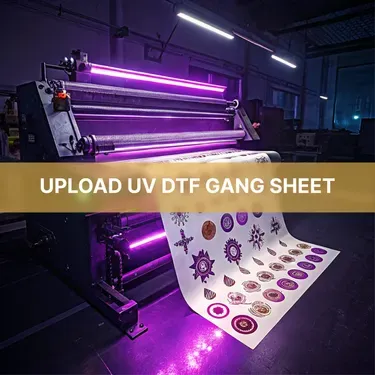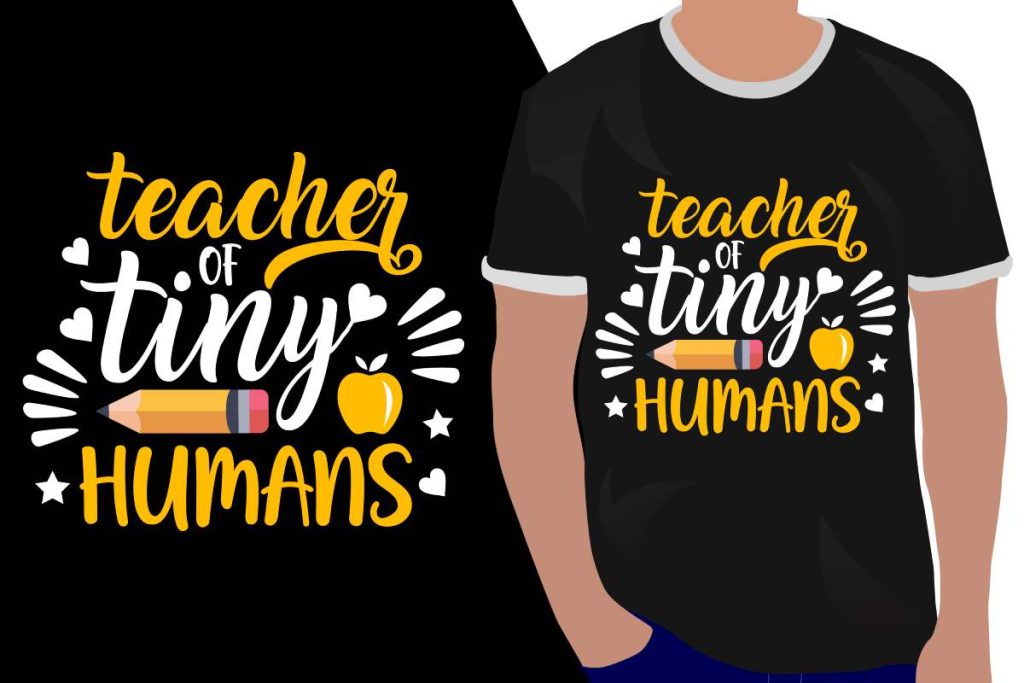UV DTF Gangheet printing is revolutionizing the world of modern print technology by seamlessly combining UV printing and Direct to Film (DTF) processes to produce stunningly vibrant and enduring prints. This innovative approach utilizes advanced UV printing technology that enhances color reproduction and durability on a diverse array of substrates, setting it apart as a preferred choice for professional applications. As printing enthusiasts and businesses alike seek ways to improve efficiency and quality, UV DTF Gangheet printing stands out as a practical solution. By employing a streamlined method that includes specialized equipment, such as UV DTF printers and curing units, anyone can transform creative ideas into high-quality printed products. Dive into the exciting realm of UV DTF Gangheet printing to unlock new possibilities in the art of print making.
Introducing a groundbreaking method in the printing sector, UV DTF or direct-to-film printing represents a fusion of advanced UV technology with the unique characteristics of gangheet printing. Often heralded for its remarkable durability and vibrant color output, this style of printing allows users to transfer intricate designs onto various materials with ease. The synergy of UV printing techniques and DTF applications enhances the printing experience, providing superior results that cater to both professional and hobbyist needs. This modernized approach to printing not only streamlines the process but also ensures that the final products withstand the test of time, making it an appealing option for anyone looking to elevate their printing game.
The Benefits of UV DTF Gangheet Printing
UV DTF Gangheet printing offers numerous advantages that set it apart from traditional printing methods. One of the main benefits is its ability to achieve stunning color vibrancy and high durability, making it ideal for professional applications. The integration of UV printing technology ensures that the inks cure rapidly under UV light, resulting in prints that maintain their quality even after exposure to the elements. Furthermore, this printing method allows for versatility on a wide range of substrates, including fabrics, metals, and plastics, widening creative possibilities for artists and businesses alike.
Another key advantage is the efficiency of the workflow with UV DTF printing. Unlike conventional printing methods that may require lengthy drying times, UV curing enables immediate handling and processing of prints. This time-saving aspect is essential for businesses looking to increase production rates without compromising quality. Additionally, the adhesive powder used during the DTF process enables seamless transfers between the printed designs and various substrates, ensuring that the end product meets customer expectations for durability and aesthetic appeal.
Essential Equipment for Successful Printing
When starting with UV DTF Gangheet printing, having the right equipment is crucial for achieving high-quality results. The foundation of your setup will be a reliable UV DTF printer equipped with UV LED technology. Brands such as Mimaki and Roland offer models tailored for different production scales, enabling users to select tools that fit their specific needs. Complementing the printer is a dependable heat press, which ensures that the printed designs transfer effectively to the substrates while maintaining the necessary temperature and pressure.
In addition to these essential machines, a UV curing unit is indispensable for setting the inks effectively. Using UV light to cure the prints not only enhances their durability but also improves adhesion to the substrate, reducing the risk of peeling or fading over time. Investing in high-quality equipment may involve a higher initial cost, but the long-term benefits of robust and reliable printing capabilities make it a worthwhile investment for any serious printer.
Understanding the Step-by-Step Process
Navigating the UV DTF Gangheet printing process entails following a well-defined series of steps, beginning with design preparation. Ensuring that your artwork is created at a resolution of at least 300 DPI is imperative to achieve crisp and clear prints. Utilizing professional design software, such as Adobe Illustrator or CorelDRAW, allows for precision in your designs, setting a strong foundation for the subsequent printing stages.
Following the design phase, printing setups require meticulous attention. Loading the DTF film into the printer and adjusting the print settings to align with substrate specifications are essential to avoid misprints. After the printing step, applying adhesive powder while the ink is wet solidifies the transfer process, ensuring adherence to the final substrate during heat press application. This step-by-step approach not only reinforces the quality of the final product but also enhances the efficiency of the overall printing process.
Material Selection for Optimal Results
Selecting the right materials for UV DTF Gangheet printing is crucial for achieving optimal results. The choice of DTF film is particularly important, as only specially coated films will allow proper ink adhesion and facilitate a successful transfer to the substrate. It is advisable to test different film types to identify which yields the best results for your specific applications, given that each film can react differently depending on the printer and ink being used.
In addition to selecting high-quality DTF film, the use of appropriate substrates is critical for maximizing print quality. Options such as cotton, polyester, and various plastics offer different aesthetic and performance characteristics. Experimenting with different substrates helps determine their compatibility with UV DTF printing techniques and can provide insights into potential market offerings that fulfill consumer demands for durable and vibrant prints.
Staying Ahead in UV Printing Technology
As of 2025, advancements in UV printing technology present new opportunities for those involved in UV DTF Gangheet printing. Continuous innovation in equipment and materials enhances capabilities, making it easier for small businesses and hobbyists to enter the printing market. By staying updated with the latest trends and technological developments, printers can refine their skills and improve their product offerings, ensuring they remain competitive in an increasingly digital landscape.
Engaging with online communities and educational resources focused on UV DTF printing can provide valuable insights into effective techniques and industry standards. Platforms like Printwear magazine offer access to expert knowledge and experiences that can help printers adopt best practices, troubleshoot common challenges, and explore new creative avenues. In a fast-evolving field, commitment to ongoing learning is vital for achieving sustained success and creativity in UV DTF printing.
Best Practices for Quality Control
Implementing best practices in UV DTF Gangheet printing is essential to ensure consistent quality and customer satisfaction. Regular quality control checks of printer settings, ink quality, and material compatibility can help identify potential issues before they escalate into production problems. Enforcing strict guidelines for each stage of the printing process further enhances reliability, leading to improved end products that meet client expectations.
Furthermore, maintaining a detailed record of tests and experiments with various substrates and inks can serve as a valuable resource. By documenting the outcomes of trials, printers can build a database of successful combinations that produce optimal results. This data-driven approach not only streamlines the production process but also fosters a culture of continuous improvement, allowing businesses to adapt swiftly to changing market needs and establish a reputation for quality.
Frequently Asked Questions
What is UV DTF Gangheet printing and how does it work?
UV DTF Gangheet printing blends UV printing technology with Direct to Film (DTF) printing. This method involves printing designs onto a special film that is then cured with UV light, allowing for vibrant and durable prints that can adhere to various substrates.
What equipment do I need for UV DTF Gangheet printing?
To get started with UV DTF Gangheet printing, you’ll require a UV DTF printer equipped with UV LED technology, a heat press for transferring designs, and a UV curing unit to solidify the inks on the DTF film.
What materials are essential for successful UV DTF Gangheet printing?
Essential materials for UV DTF Gangheet printing include specially coated DTF films, adhesive powder for transferring designs, and compatible substrates such as cotton, polyester, plastic, or metal, depending on the intended product.
How do I prepare designs for UV DTF Gangheet printing?
For UV DTF Gangheet printing, design preparation involves creating graphics with design software like Adobe Illustrator at a minimum resolution of 300 DPI, ensuring the output will be high-quality and ready for print.
What are the key steps in the UV DTF Gangheet printing process?
The UV DTF Gangheet printing process includes designing, setting up the printer, printing on DTF film, applying adhesive powder, curing the print with a UV unit, and finally transferring the design to the chosen substrate using a heat press.
Why is UV curing important in UV DTF Gangheet printing?
UV curing in UV DTF Gangheet printing is crucial because it hardens the ink on the DTF film, ensuring strong adhesion and durability of the prints, which ultimately results in high-quality and long-lasting finished products.
| Key Concept | Details |
|---|---|
| Overview | UV DTF printing combines UV and DTF technologies for vibrant, durable prints. |
| Understanding UV DTF Printing | Transfers designs onto films, cured under UV light for durability and color accuracy. |
| Essential Equipment | 1. UV DTF Printer (brands like Epson, Mimaki) 2. Heat Press (for transferring designs) 3. Curing Unit (for setting inks) |
| Materials Required | 1. DTF Films (specially coated) 2. Adhesive Powder 3. Substrates (fabrics like cotton, polyester, plastics, metals) |
| Step-by-Step Process | 1. Design Preparation 2. Print Setup 3. Print 4. Apply Adhesive 5. Cure the Print 6. Transfer to Substrate |
| Best Practices | – Quality Control of printer settings – Experiment with substrates for best results |
| Recent Developments | Increased accessibility of UV DTF printing for small businesses; abundant online resources available. |
Summary
UV DTF Gangheet printing represents a cutting-edge solution for anyone looking to produce high-quality, durable prints across various materials. By carefully understanding the essential equipment, materials, and methods involved, beginners and seasoned print professionals alike can harness this technology to deliver eye-catching designs that stand the test of time. Staying engaged with ongoing advancements in the field is crucial, as innovations continually reshape the landscape of UV DTF printing. With dedication and attention to detail, the opportunities for creative expression and successful ventures within this industry are vast and promising.



